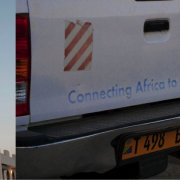ICTs and their salvific economic power…
ICTs are spoken of in almost salvific economic terms by many dogmatic evangelists. The fact that these are potent tools, yet not a silver-bullet, is easily missed. Shouldn’t the truth to this tale already be known? The few available studies suggests that ICTs do present significant economic opportunities, but, as a recent Inter-American Development Bank (IDB) study reinforce, access alone cannot bring about sustained economic development.
As I contended in a previous blog, the findings of the IDB study, the first systematic examination of the impact of ICTs, should be instructive. In particular, it highlights the importance of building and boosting capacity in order for countries to capitalize on the gains in access. Of course, this is all very logical, but the manner in which the ICT space in some contexts operate seems to confuse the concept of access with use, two patently different and important elements for the potency of ICTs to be realized.
Aside from access, the IDB report notes three key points, the scarcity of resources and cost-benefit (that’s newer is NOT always better), the importance of complementarity, and public-private cooperation. These factors are key to our understanding of disparities between countries and regions with respect to how ICTs have been successfully leveraged. Essentially, ICTs work better in places where the policy environment and capacity is better.
In my previous blog, I talked about the main thrust of the report, so it is fitting that I now share with you a few of the successful ICT projects studied by the researchers. As you glance over these projects, bear in mind the lesson above: newer is not always best, simplicity is often what rules in many interventions.
Here are a few examples of the successful projects profiled in the IDB report:
1)Savings Reminders—BOLIVIA
- Clients who received monthly reminders saved 6% more than individuals who did not.
- Reminders that mentioned a specific future expenditure of the individual increased his/her savings by 16%.
2) Internet-based Sexual Education—COLOMBIA
- Significant improvements in sexual knowledge and attitudes (STD prevention, condom use, pregnancy prevention and sexual violence/abuse)
- Kids are more able to identify safe and risky sexual practices, STD symptoms and violent/abusive sexual situations
- More importantly, behavioral change: teenagers initiate sexual activity later and have fewer sexual partners
- Reduction in pregnancies, from 2.2% to 1.3%
3) Government Efficiency and Computers—BOLIVIA
- Use of ICT to improve efficiency in the issuance of national ID cards
- Productivity of computer use (as opposed to typewriters) increases by more than one third.
4) Environment: Case of ‘Green’ Bags—MEXICO
- Digital messages and banners in Mexico City and elsewhere
- Clients exposed to information reduce new bag consumption and tend to increase consumption of reusable bags, 12 percent.
Key lessons: Information is key, more so than delivery in some cases. And, ICTs cannot do it all: The success rates of indigenous women in the Bolivian project is much lower. As with all projects, a myriad of systemic domains and factors are at play—be they discrimination, ignorance, or simply bureaucratic delay!
Overall, the study touch on the major areas. It can be best summarized as: start small, evaluate, and then scale up!






































